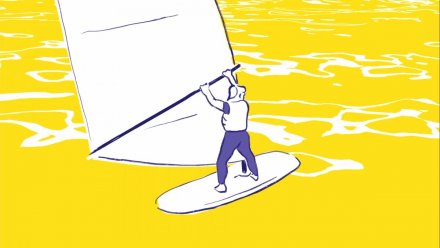The new serie « Physics Gets Physical », composed by 4 episodes of 12’ (2021) is now available on ARTE.tv replay up to june 27, 2026. Director: François-Philippe Gallois, Romain Blanc-Tailleur. Production: ARTE GEIE, FLAIR PRODUCTION with the participation of the CNRS and the Centre National du Cinéma et de l'Image Animée.
A serie to watch the Olympic Games from another point of view: from the Physics’one.
Pole vault, Sprint, Trampoline… in most of the Olympic disciplines, performances are contested within a few fractions of a second or within a few milimeters. Beyond intensive trainings, the athletes improve their performances thanks to the study of biomechanics and physics’ laws.
• Pole Vaulting : Overcoming Gravity – The Strongest of Them all: Energy is still a mysterious fundamental notion of physics. In this athletics field, Jumps well illustrate this notion : the jumping action is based on the kinectic energy converted into elastic energy, before being converted in turn into gravitational energy. This is a key property of energy. To reach a performance, pole-vaulters and jumpers athletes have to play with energy in order to optimize it, transforme it and keep it.
• Sprinting and Newton’s Law – the Mechanics of Strengh: Running races champions, like planets or any kind of moving object, obey to Newton’s second law : Dynamics. The sprint sport practice gives us the opportunity to peel this law principles to understand why all is done according to the outset of th spint…. Ready, set, go !
• The Trampoline and the Kinetic Energy: If you launch a spinning top, it will spin by its own for a while. In this sport field, trampoline gymnasts can performe almost fifty rotations within 20 seconds, thanks to the Kinetic moment (angular momentum). Would you enjoy a little tour of the country of gynamsts ?
• Windsurfing and Lift: have you ever seen a windsurfer cutting through the waves, by harnessing the wind? As if she were flying over the sea? This is an amazing sport and this is possible thanks to a windsurf equiped with a « foil » (a centreboard), using a physics’ notion : Lift. This very notion that makes the planes glide and takes the javelins far away from the throwers. What if you feel your wings grow, without being Icarus ?
Researchers:
-Rémy Mosseri, co-author, Laboratoire de Physique Théorique de la Matière Condensée, CNRS/Sorbonne Université
-Julien Frère, Grenoble Images Parole Signal Automatique (GIPSA-lab), INS2I, CNRS/Université Grenoble Alpes/INRIA
-Arnaud Decatoire (Université de Poitiers), Institut P’ (Recherche et Ingénierie en Matériaux, Mécanique et Energétique (Pprime)/Equipe RoBioSS - CNRS/Ecole Nationale Supérieure de Mécanique Aérotechnique/Université de Poitiers
-Marc Fermigier (Ecole Supérieure de physique et Chimie Industrielles de Paris), Physique et mécanique des milieux hétérogènes (PMMH) - CNRS/ Sorbonne Université/ESPCI Paris/Université de Paris
